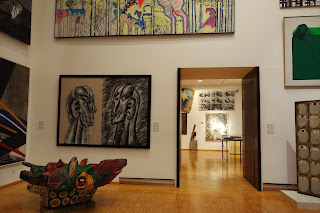Zen & the Art of Garden Maintenance: Kyoto Garden - London
I've been giving some thought lately about aesthetics and key design principles within the realm of Japanese gardens and was asking myself the question, "What makes Japanese gardens look so Japanese? Recently I was looking at some photos I took during the Easter holiday break. During that long weekend the weather was particularly amazing and, as we British do, made the most of the opportunity and left the house. A friend of mine visited a Japanese garden here in London a few weeks prior to the Easter weekend and took some rather nice photos. It took me by surprise so I asked her where this place was: Kyoto Garden, Holland Park, London. Considering I've been living in London since the beginning of 2012 I did feel kind of silly for not actually knowing about this beautiful place and the fact that I have wondered through Holland Park without actually crossing Kyoto Garden's path. Strange, I know.
Although London doesn't really boast that many examples of Japanese garden design especially on the scale of Kyoto Garden, with maybe the exception to the Japanese Gateway at Kew Gardens, both of these are really good examples of the Japanese garden aesthetic. Still, having to explain or describe what makes a Japanese garden 'Japanese' is quite challenging, and I found that by using words to describe a Japanese garden these same adjectives could also be applied to any garden style. 'Form' and 'Function'. 'Harmony' and 'Composition'. 'Ornate' and 'Tranquil'. Moreover to try and describe a Japanese garden to someone who hasn't had the privilege of seeing one may prove futile. Yet somehow after we witness one of these horticultural beauties we know what a Japanese garden is, what it looks like, and its function. Trying to describe its unique quality however, for me at least, remains aloof.
I'm reminded of a novel I read many years ago during the early 1990s, 'Zen and the Art of Motorcycle Maintenance' by Robert M. Pirsig. Part of the novel's narrative involved the protagonist (based on Pirsig) attempting to describe the concept of quality. What is quality exactly? And how, by pursuing and finding quality in our everyday actions, may it assist in overcoming the 'Gumption Trap'? It would be fair to say that garden maintenance and even landscape design carries with it the weight of gumption and tedium. But it is when I look for the quality, found within the exercise of studying and drawing a design, that I am able to derive a deeper meaning in why I have chosen to study landscape design. So in many ways Japanese gardens are a manifestation of that.
Anyway, I digressing here, but the point I'm trying to make here is that certain visual aesthetics or qualities can only be best understood when the individual is in the presence of that particular aesthetic. After which you'll just know what it is the next time you see one. It's like when someone says to you, "It's very difficult to explain, but you'll know it when you see it."
If anyone reading this knows of other Japanese gardens aside from Kyoto Garden and The Japanese Gateway at Kew Gardens please do let me know.










There's one on the roof of the Department of Oriental and African Studies I believe.
ReplyDeleteYou mean SOAS? :-)
DeleteI don't know why I'm identified as Mama!
ReplyDeleteWanda C
Hi Wanda, thanks for visiting my blog! Do drop by again :-)
Deletegarden love seat
ReplyDeletekids garden furniture
garden companion seat
companion seat
wooden love seat
wooden barbecue shelter
companion garden seat
garden arbour seat
This comment has been removed by a blog administrator.
ReplyDelete"This is an excellent post on Garden Maintenance. Your tips and insights are very practical and easy to implement. Thank you! Grouse Gardens and Property Maintenance team provides quality service of Garden Maintenance in Eastern Suburbs."
ReplyDelete